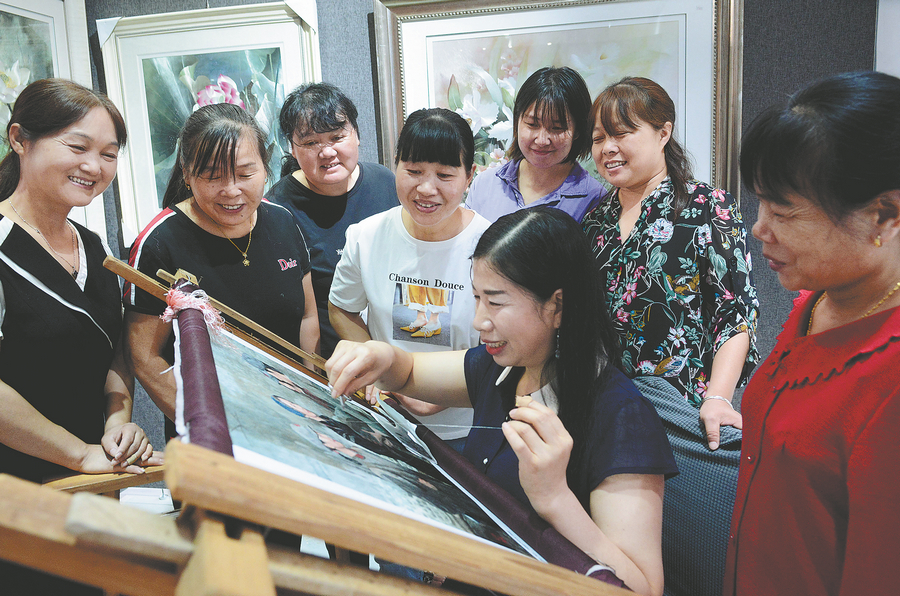

"A saying about Xiang embroidery goes, 'An embroidered flower seems to be fragrant, an embroidered bird seems to be chirping, an embroidered tiger seems to be running and an embroidered figure seems to have vivid expressions,'" says Jiang.
At 18, she was recruited by Hunan Embroidery Research Institute and became a professional embroiderer, and learned Xiang embroidery from masters such as Zhou Jinxiu and Liu Aiyun. Two years later, when a skilled embroiderer who worked at the institute passed away suddenly and her work about tigers was unfinished, Jiang got the task and did it well. That was her first attempt at pengmao (fluffy stitching), a technique in Xiang embroidery to make vivid patterns of tigers and lions.
In Su embroidery, the cat is a pattern subject, while in Xiang embroidery it's the tiger. In the 1950s, craftswoman Yu Zhenhui invented pengmao, which makes one side of an embroidery fluffy. That ensures a three-dimensional effect of threads like fur. The technique has become a feature of Xiang embroidery.
In 1988, Jiang received a task to restore an ancient stitch from an embroidery unearthed in Mawangdui, a tomb of the Western Han Dynasty (206 BC-AD 24), in today's Changsha, Hunan province. She says she visited a museum with a colleague to observe the needlework and brought a notebook to copy the patterns and colors and went home to replicate the work.
"Then we went to the museum again to compare and analyze, and finally made clear how the stitching was done," says Jiang. "I realized it can create an elegant effect but the work is demanding. Maybe that's why it was gradually lost over time."
In the next several years, Jiang says she found some people's special demands for embroidery were often not met by the institute, and decided to start her own business after resigning in 1991. It took her more than 10 years to become successful as a businesswoman. Products of her company, from everyday objects to artifacts, have been sold in many places.